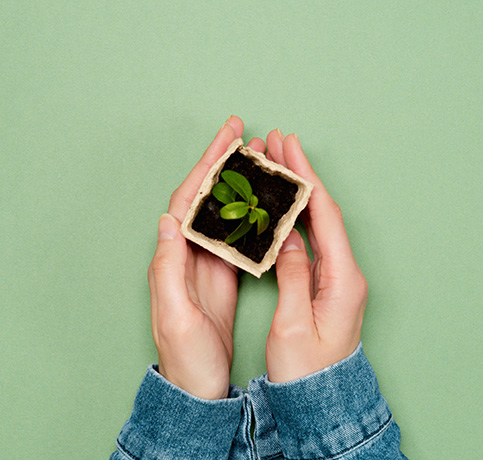Caring For The Soil In The Landscape
Why Is Our Soil Lousy?
It Can Start Lousy
These days soil takes a real beating when homes are under construction. Builders skim the topsoil from the property first thing, and then bring in heavy constuction equipment which invariably compacts the soil. If, when the house is finished, they replace the topsoil at all, it is a skimpy layer which just barely obscures the "fill" of construction debris left behind. By the time the owner takes possession, the yard amounts to not much more than sterile, compacted "dirt". It certainly is not a healthy medium in which to grow grass and landscape plants.
Then We Make It Worse
Probably because most of us never really include the soil in our list of things in our landscape to take care of, we have been inadvertently harming it month after month; year after year. Simply by walking behind a lawnmower 25 times a year we promote compaction; our weight squeezes the air from between the soil particles. With its oxygen content reduced, the soil can not support its population of microorganisms.
Unfortunately in our enthusiasm to do the right thing, we often over-fertilize and use lots of chemical pesticides which makes the chemical environment in the soil hostile to earthworms and microorganisms. We often over-water which floods soil air spaces, reducing its volume of oxygen and driving away the earthworms and killing more microorganisms. About the only plants happy in this suffering soil are weeds.
In short, we are not taking very good care of the soil that we expect to nurture our lawn and landscape plants.
If the soil is not healthy enough to maintain landscape plants itself, then we have to take on the responsibility. This means more work for us. We must substitute extra fertilizer for the nutrients normally provided by microbial life in the soil. We must resort to pesticides to control pests normally controlled by soil organisms. We seed our lawns more often since the existing grass, struggling in a poor soil, dies more readily. We water more frequently to compensate for the inability of compacted soil to hold and drain water properly.
The bottom line? Lots of work all season year after year all because we have lousy soil and did not realize that it was important. To maintain an attractive landscape in poor soil an enormous amount of labor (not to mention time and money) is required. The way to get off the high maintenance treadmill is to rehabilitate the soil under your turf, your trees, your shrubs, and all other landscape plants. By restoring your soil to good health, you restore its ability to do most of the work of maintaining an attractive landscape. Then you will have a low maintenance yard.
Probably the last thing a Yardener looks at when he or she buys a new home is a dirt. You care about the condition of the roof, whether the basement is dry, and the age of the plumbing. But how good is the soil under your lawn? Not an issue. How good is the soil under your trees and shrubs? Also not an issue.
Yet, if you have any interest in having a really healthy low maintenance landscape around your new home, you want to begin to get very interested in the condition of that soil.
Most Soil In America's Home Landscapes Is Lousy
We estimate that over 70%of homes in America have lawns, trees, and shrubs growing in terrible soil!
While Yardeners want to have an attractive landscape, we want Yardeners to know that bad soil creates an economic issue as well. Having good healthy soil can make a measurable contribution to reducing the time and money spent maintaining the landscape. Simultaneously, having good soil improves the health and appearance of trees and shrubs which in turn increase the resale value of the home. This file tries to encourage the Yardener to pay a bit more attention to soil care in his or her long term yard care strategy.

